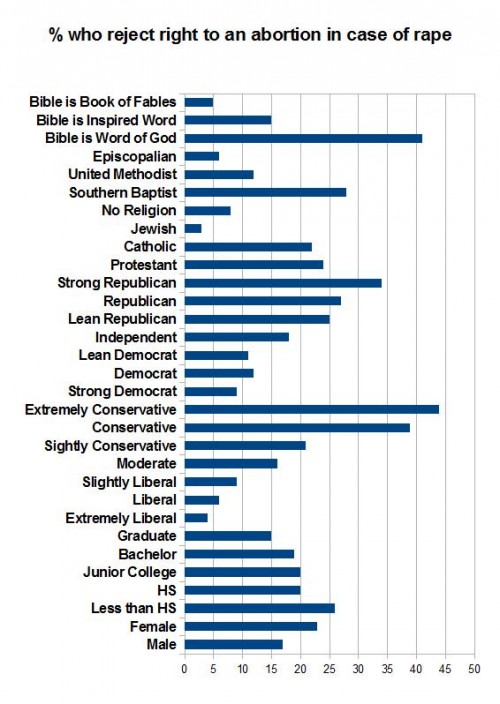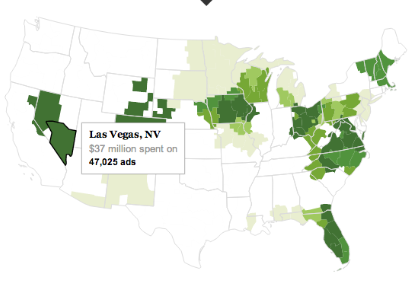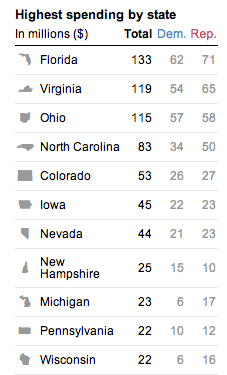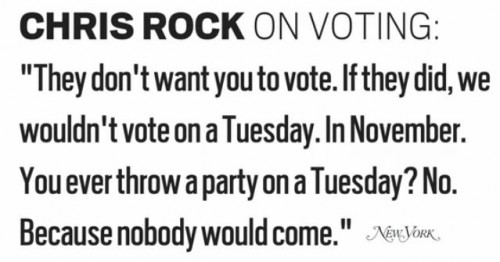Cross-posted at Caroline Heldman’s Blog.
Last Thursday, Republican Representative and Tea Party favorite, Joe Walsh (R-Ill), told reporters that when it comes to abortion, “there’s no such exception as life of the mother” because of “advances in science and technology.” This astounding claim was news to the medical community.
Walsh joins the ranks of some other prominent Republican men who don’t understand basic lady parts science: Representative Todd Akin (R-MO), who claimed that pregnancy from “legitimate rape” is “really rare” because “the female body has ways to shut the whole thing down,” and conservative comedian Rush Limbaugh, who doesn’t understand the basics of birth control pills. (He thinks you take a pill every time you have sex!)
These remarks would be humorous if it weren’t for the fact that these men are part of a broader effort by the extreme wing of the Republican Party to take aim at women’s reproductive health.
At the state level, Republican lawmakers enacted a record number of anti-abortion measures in 2011, four times as many as the previous year. A study from the Guttmacher Institute shows that legislators in 45 state capitals introduced 944 provisions to limit women’s reproductive health and rights in the first three months of 2012. These states are proposing/passing abortion ultrasound requirements, gestational limits, health insurance exemptions for contraception coverage, and stringent limitations on medical abortions.

In the past two years, 19 states have introduced bills modeled on a Nebraska law that bans abortion 20 weeks after fertilization. The Oklahoma State Senate redefined “person” as starting at conception, while the Mississippi House approved a bill requiring women who want an abortion to undergo an examination to determine if there is a fetal heartbeat. Texas and Virginia require women to undergo an ultrasound prior to receiving an abortion, and many other states have similar proposals underway. Texas recently cut reproductive services for 130,000 poor women. As this chart from NARAL indicates, twice as many states passed anti-choice laws in 2011 than in 2010.

At the federal level, in 2010, the newly elected House Republican majority was quick to propose major cuts to reproductive health services. They made several attempts to eliminate funding for Planned Parenthood, the largest family planning provider in the U.S. that has been around for a century. They also tried to gut Title X, a program that funds family planning and preventive breast and cervical cancer screenings. Both proposals were stopped by Senate Democrats. Ironically, on the same day that House Republicans tried to eliminate Title X funding, Representative Dan Burton (R-IN) proposed contraceptive funding for wild horses (something that we desperately need, actually).
Congressional Republicans also proposed an amendment to the health care bill that allows federally funded hospitals to turn away women in need of an abortion to save their lives. This is by far the most brazen attack on the “mother’s health” exception to restrictions on abortions. In May of 2012, Republicans proposed a veto on sex-selective abortions that failed to pass the House, despite broad Republican support for the bill. And in early 2012, Republicans in Congress held hearings on whether the new health care law should include contraception coverage. These hearings included virtually no female experts, so House Democrats held more inclusive hearings that (gasp) included women. Limbaugh assailed one hearing participant, Georgetown student Sandra Fluke, calling her a “slut” and a “prostitute.”
Prominent conservatives, including Republican Party leadership, have roundly dismissed the assertion that the party is engaged in a War on Women, but the recent flurry of legislation curbing reproductive freedoms tells a different story. Given baffling comments from the likes of Walsh, Akin, and Limbaugh, the generals in this War on Women obviously need to include lady parts science as part of basic training.
——————



















